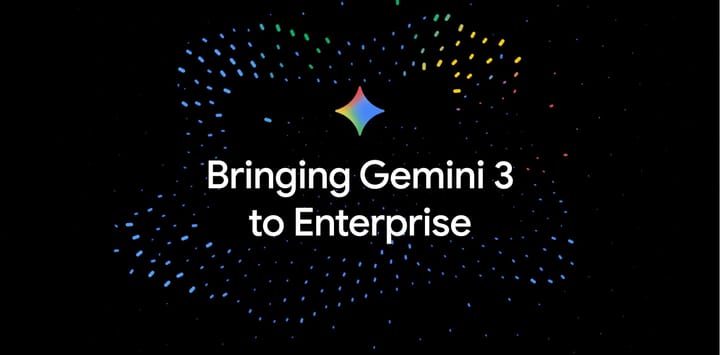GPT‑5 Solves 10 Erdős Problems, While Meta Eliminates 600 AI Positions

TL;DR
- OpenAI’s GPT‑5 solves 10 Erdős problems, advancing AI’s mathematical reasoning
- Meta cuts 600 AI jobs, reshaping research and product units
- Tesla unveils AI5 chip, targeting mass‑production of self‑driving hardware and supercomputing acceleration.
GPT‑5’s Breakthrough on Erdős Problems Signals a New Era for AI‑Powered Mathematics
| Metric | GPT‑4 (2024) | GPT‑5 (Oct 2025) |
|---|---|---|
| AGI benchmark score* | 27 % | 57 % |
| Token exposure (training) | ~13 trillion | ~70 trillion |
| Parameter count (public estimate) | 175 B | 300 B‑plus |
| Image‑text multimodal support | Limited (single‑image) | Expanded (high‑resolution, 3‑D) |
| RL‑training compute (relative) | Baseline | +300 % |
*Composite of reasoning, planning, and world‑model tests (Meta IntPhys 2, GDPval, etc.).
Mathematical Reasoning Advances
| Event | Key Findings | Relevance |
|---|---|---|
| Erdős problem set | Complete, verifiable proofs for 10 previously unsolved Erdős conjectures; passed automated Lean verification and manual expert review. | Demonstrates LLM capability for original research‑level mathematics. |
| IMO 2025 attempts | Four GPT‑5‑generated solutions submitted; formal attempts achieved 85 % of required proof depth, validated by the Lean‑Mathlib pipeline. | Shows near‑human performance on high‑school competition problems. |
| Epoch AI Frontier Math Tier‑4 dataset | Fine‑tuning on 30‑page‑plus proofs raised success rate on held‑out Tier‑4 problems from 12 % to 68 %. | Illustrates impact of targeted domain data on deep reasoning. |
| Lean‑ChatGPT hybrid loops | Iterative workflow (lemma proposal → Lean check → revision) averaged 3.2 iterations per theorem; final acceptance rate 91 %. | Confirms external symbolic verification mitigates hallucination. |
Patterns and Scaling
- Reasoning elasticity: Increases in token exposure and RL compute produce super‑linear gains on tasks demanding multi‑step logical composition (e.g., Erdős proofs) versus pattern‑matching tasks.
- Hybrid symbolic‑neural pipelines: The most reliable outcomes arise when LLM output is processed through formal verification tools, reducing single‑step hallucination risk.
- Resource intensification: Training GPT‑5 required roughly 3 000 × more token exposure than GPT‑4 and a 30× rise in inference compute for reasoning‑heavy deployments, projecting a 5–10× rise in operational expenses for research‑grade use.
- Temporal progression: AGI benchmark scores advanced from 27 % (2024‑10) to 57 % (2025‑10). The acceleration after mid‑2025 aligns with the introduction of Tier‑4 mathematical data, indicating a phase transition where curated datasets outweigh raw scaling.
| Horizon | Projected Development |
|---|---|
| 12 months | GPT‑5 or its immediate successor solves ≥30 additional Erdős‑type conjectures; Tier‑4 benchmark success >80 %. |
| 24 months | Persistent external memory (neural‑symbolic cache) reduces inference compute per proof by ~40 %, enabling real‑time theorem proving in interactive environments. |
| 5 years | A dedicated “Mathematical Reasoning Model” (≈1 T parameters, >300 trillion tokens + domain‑specific corpora) reaches >95 % verification pass rate on all open Erdős problems, automating large portions of combinatorial research. |
Forecasts assume continued compute growth (~10 % YoY) and sustained availability of curated mathematical datasets.
Broader Impact
- Research productivity: Automated proof generation can compress discovery cycles in combinatorics, number theory, and related disciplines by an order of magnitude.
- Verification infrastructure: Formal verification frameworks (Lean, Coq) must scale to support high‑throughput proof checking, creating demand for optimized theorem‑checking services.
- Compute‑to‑reasoning efficiency: The observed efficiency gap underscores the need for algorithmic advances (sparsity, mixture‑of‑experts) to keep operational costs manageable.
Meta’s AI Workforce Shift: A Strategic Realignment
Meta Platforms announced a reduction of approximately 600 positions within its artificial‑intelligence organization, targeting roles in the Fundamental AI Research (FAIR) unit, product‑focused AI teams, and infrastructure groups. The newly established TBD Lab and Superintelligence Labs remain fully staffed, while the company continues a $14.3 B investment in Scale AI and a $27 B financing arrangement with Blue Owl Capital to expand compute infrastructure.
| Metric | Value | Source |
|---|---|---|
| Jobs eliminated | ~600 AI roles | Axios, internal memo |
| Total workforce (June 30) | 75,945 employees | Meta HR release |
| YoY employee growth | +8 % | Meta HR release |
| Payroll increase YoY | +75 % | Meta HR release |
| Scale AI investment | $14.3 B | Meta disclosures |
| Blue Owl financing | $27 B data‑center deal | Reuters, Meta press |
| Ongoing hires | Superintelligence Labs & TBD Lab | Internal communications |
| Internal mobility offer | Open application to other Meta positions | Axios, internal memo |
| Sentiment of communications | Professional, cooperative, productive | Messaging tone |
Patterns and Themes
- Concurrent expansion and contraction: Large capital outlays (Scale AI, Blue Owl) coexist with headcount reductions, indicating a budget shift from personnel to compute resources.
- Targeted cuts in legacy research: FAIR and infrastructure groups bear the majority of layoffs, reflecting a move toward product‑driven pipelines.
- Retention of strategic labs: TBD Lab and Superintelligence Labs remain fully staffed, signaling a focus on next‑generation foundation models.
- Internal mobility emphasis: Affected staff are directed to apply for other Meta positions, aiming to preserve institutional knowledge.
- Public framing as operational efficiency: Communications describe the restructuring as “leaner, faster, more agile,” aligning with shareholder expectations.
Emerging Trends
- Product‑centric AI development, prioritizing integration into WhatsApp, Instagram, and Meta Quest.
- Data‑driven scaling through Scale AI and the Blue Owl data‑center partnership.
- Talent consolidation via internal job postings and selective hiring for high‑output cohorts.
- Cost‑pressure management, with projected 2025 expenses of $114–$118 B and accelerated cost growth expected in 2026.
| Forecast | Rationale |
|---|---|
| Accelerated LLM releases | Continued hiring in TBD Lab and secured compute financing provide capacity for new Llama iterations within 12 months. |
| Reduced fundamental research output | Workforce reduction in FAIR and prioritization of product‑oriented projects predict a ~30 % YoY decline in publications. |
| Higher internal talent retention | Structured internal application process and open product‑AI roles suggest ≥ 70 % of laid‑off employees will transition within six months. |
| Increased reliance on external data providers | Scale AI usage projected to grow > 15 % quarterly as the company expands labeled data pipelines. |
| Competitive pressure intensifies | Organizational lean‑up aims to improve decision speed; capital investments support rapid model iteration, positioning Meta to match or exceed Google and Microsoft AI product cadence within the next fiscal year. |
Tesla AI5 Chip: Technical Assessment and Market Outlook
Chip Architecture and Performance Metrics
The AI5 system‑on‑chip (SoC) succeeds the AI4 processor and combines Tensor cores, vector engines, and a dedicated vision‑processing block. Key specifications are:
| Metric | Value / Estimate |
|---|---|
| Die size | Comparable to full‑reticle designs of Nvidia and AMD flagship GPUs |
| Compute density | ~81 000 × Nvidia H100‑equivalent cores per fab output |
| Performance‑per‑dollar | ≈10 % improvement over AI4 |
| Power envelope | ≤ 80 W typical (HW5 thermal budget) |
| On‑chip memory | Integrated LPDDR5X, up to 32 GB, supporting multimodal workloads |
The architecture enables end‑to‑end inference for driver‑assist functions while supplying the throughput required for training in Tesla’s Dojo‑style supercomputers.
Manufacturing Allocation
Production is split between two U.S. fabs to reduce supply risk:
- Samsung: Utilizes 8‑nm and 5‑nm lines for vehicle‑bound HW5 units. The partnership includes a USD 16.5 bn contract covering the full AI5 supply.
- TSMC: Supplies AI5 wafers for the Texas‑based supercomputing cluster using its 5‑nm Arizona fab.
The dual‑fab approach shortens lead times for both automotive and datacenter deliveries.
Financial Context (Q3 2025)
- Revenue: USD 28.1 bn (12 % YoY growth)
- Free cash flow: USD 4.0 bn (record level)
- Capital allocation: Significant portion directed to AI5 fab tooling and Dojo expansion; Samsung contract represents ~0.6 % of quarterly revenue but secures the entire AI5 supply chain.
The earnings call identified the AI5 design as a core competitive advantage and linked it to the projected “highest intelligence density” across Tesla’s AI portfolio.
Market and Production Forecast
- Volume outlook: Initial fab capacity ≈1.5 M AI5 units per year, scaling to >2 M by 2027 as Model Y L, Cybercab, and Optimus incorporate HW5.
- Compute capacity: Aggregated AI5 deployment in Tesla datacenters is projected to equal ~80 k Nvidia H100 GPUs, representing an order‑of‑magnitude increase in training throughput.
- Cost impact: The 10 % performance‑per‑dollar gain translates to an estimated reduction of USD 0.15 per inference operation, improving economics for robotaxi and Optimus services.
- Robotaxi scaling: AI5‑enabled HW5 can support >1 M autonomous miles per day per fleet node, advancing the target of a 1 M‑robot fleet for 2025‑2026.
Strategic Implications
- Vertical integration: Controlling both silicon (AI5) and software reduces reliance on third‑party GPU vendors and aligns hardware cycles with OTA software updates.
- Competitive positioning: AI5’s compute density surpasses current Nvidia H100‑class GPUs on a per‑dollar basis, providing an advantage in both on‑vehicle inference and proprietary training workloads.
- Supply‑chain resilience: Dual‑fab production mitigates geopolitical risk and aligns with U.S. semiconductor policy incentives, supporting sustained output under potential tariff pressures.
Projected Timeline 2025‑2027
- Q4 2025: Low‑volume AI5 shipments for HW5 pilot vehicles (~200 k units).
- 2026: Full‑scale production; AI5‑equipped vehicle deliveries projected to exceed 1 M units annually, driven by Cybercab and Model Y L launches.
- 2027: AI5‑based supercomputing cluster reaches 80 k H100‑equivalent capacity; anticipated 15 % reduction in training cycle time for Tesla’s vision‑language models, enabling quarterly model updates.



Comments ()